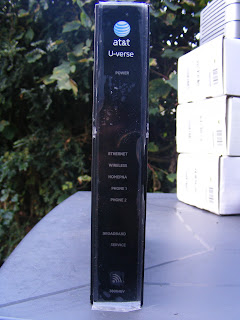What is an IP address?
IP, which stands for Internet Protocol, works like a street
address to pinpoint exactly where you are accessing the Internet from. This
allows information, like web pages and email, to be delivered to you. Every
device (such as a mobile phone, a Wii, a PlayStation console or a computer)
that accesses the Internet must have a unique IP address, which is generally
provided by an internet service provider like Time Warner Cable and AT&T. Without an IP
address, a device will not be able to get to internet to send and receive
information.
An IP address is a unique number that identifies the
location of a computer or device on a network. The current IP address version
is called IPv4 and a typical public IP address looks like this: 24.128.21.12.
What is IPv6?
IPv6 is the abbreviation for Internet Protocol version 6. We
are currently on Internet Protocol version 4, or IPv4, but IPv6 will be the
next generation protocol for Internet communication. Not only will IPv6 provide
a much larger address space, but it will also provide features such as improved
routing traffic and better security.
What does an IPv6 address look like?
An IPv6 address is much longer than an IPv4 address and
looks something like 24da:db8:ac10:fe01:2aa:ff:fe00:56ab.
Here are a few characteristics of IPv6:
1. IPv6 contains a combination of both letters and numbers (0
through 9, and A through F).
2. IPv6 consists of 32 hexadecimal characters in an address and
is 128 bits in length.
3. An IPv6 address could look like this:
fd98:d3e2:f0fe:0:54ae:34ff:fecc:892, compared to an IPV4 address that looks
like this: 24.128.21.12.
What is the difference between IPv4 and IPv6 addresses?
An IPv4 address is a series of 4 numbers separated by
periods. An example of an IPv4 address is 192.0.2.15.
An IPv6 address is a series of 8 numbers separated by
colons. An example of an IPv6 address is 2001:db8:ac10:fe01:2aa:00ff:fe00:56ab.
Why do we need IPv6?
The Internet has experienced a phenomenal increase of
devices accessing the Internet. Because of this increase, IPv4 addresses are running
out. The solution is for IPv6 to accommodate this increased demand by providing
a much larger address space, along with improved traffic routing and better
security.
Some of the major advantages of IPv6 are:
1. Larger IP address space: IPv6 has 128-bit
address space or 4 times more address bits compared to IPv4's 32-bit address
space. This large address space will provide enough address space for many
decades to come.
2. Better security: IPv6 includes security in the
underlying protocol. For example, encryption of packets (ESP: Encapsulated
Security Payload) and authentication of the sender of packets (AH:
Authentication Header).
3. Consideration to real time: To implement better
support for real-time traffic (such as videoconference), IPv6 includes a flow
label mechanism so routers can more easily recognize where to send information.
4. Plug and play: IPv6 includes plug and play,
which is easier for novice users to connect their machines to the network.
Essentially, configuration will happen automatically.
5. Better optimization: IPv6 takes the best of what
made IPv4 successful and gets rid of minor flaws and unused features.
Why can’t IPv4 just be expanded?
There were many proposals regarding how to solve the problem
with the availability of IPv4. The Internet community agreed that the approach
of IPv6 is the best.
If we run out of IPv4 addresses, will that mean I will not
be able to connect to the Internet?
No, you will still be able to connect to the Internet as you
normally do.
Will I need to purchase new equipment to support IPv6?
Your computer probably already supports IPv6, but you should
upgrade to the latest version of your operating system and browser. Most
network-capable consumer electronics don’t use IPv6 yet, but may with a future
software or firmware update.
Will mobile and wireless devices work on IPv6?
Yes. Mobile and wireless devices will work with IPv6.
Is there any way for me to check my IPv6 readiness?
Yes. But call your internet service provider.
Websites that also provide general IPv6 information
include:
The Internet Society -
http://www.isoc.org/internet/issues/ipv6.shtml
The American Registry of Internet Numbers -
http://www.getipv6.info/index.php/Main_Page
Wikipedia - http://en.wikipedia.org/wiki/IPv6













